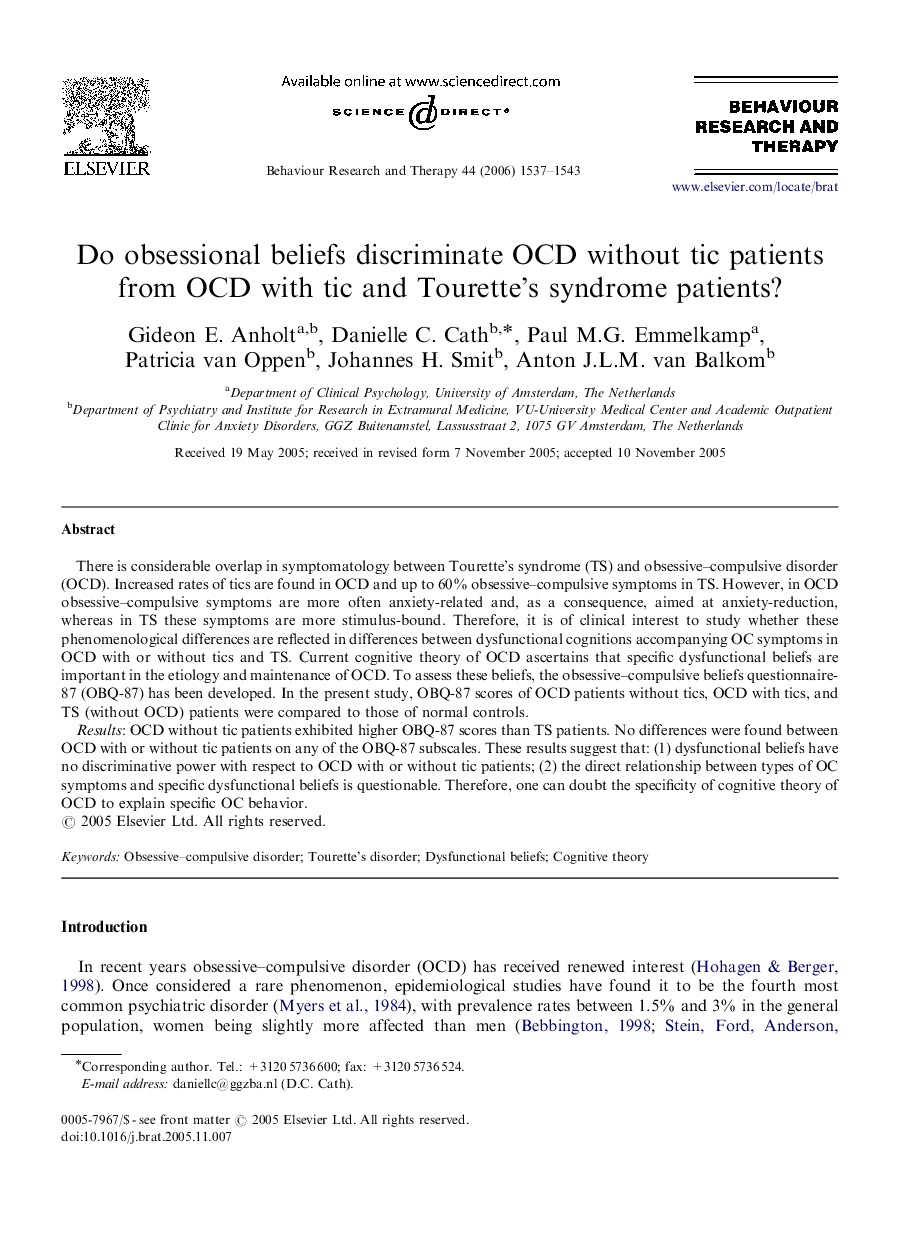| کد مقاله | کد نشریه | سال انتشار | مقاله انگلیسی | نسخه تمام متن |
|---|---|---|---|---|
| 902476 | 916164 | 2006 | 7 صفحه PDF | دانلود رایگان |

There is considerable overlap in symptomatology between Tourette's syndrome (TS) and obsessive–compulsive disorder (OCD). Increased rates of tics are found in OCD and up to 60% obsessive–compulsive symptoms in TS. However, in OCD obsessive–compulsive symptoms are more often anxiety-related and, as a consequence, aimed at anxiety-reduction, whereas in TS these symptoms are more stimulus-bound. Therefore, it is of clinical interest to study whether these phenomenological differences are reflected in differences between dysfunctional cognitions accompanying OC symptoms in OCD with or without tics and TS. Current cognitive theory of OCD ascertains that specific dysfunctional beliefs are important in the etiology and maintenance of OCD. To assess these beliefs, the obsessive–compulsive beliefs questionnaire-87 (OBQ-87) has been developed. In the present study, OBQ-87 scores of OCD patients without tics, OCD with tics, and TS (without OCD) patients were compared to those of normal controls.Results: OCD without tic patients exhibited higher OBQ-87 scores than TS patients. No differences were found between OCD with or without tic patients on any of the OBQ-87 subscales. These results suggest that: (1) dysfunctional beliefs have no discriminative power with respect to OCD with or without tic patients; (2) the direct relationship between types of OC symptoms and specific dysfunctional beliefs is questionable. Therefore, one can doubt the specificity of cognitive theory of OCD to explain specific OC behavior.
Journal: Behaviour Research and Therapy - Volume 44, Issue 11, November 2006, Pages 1537–1543